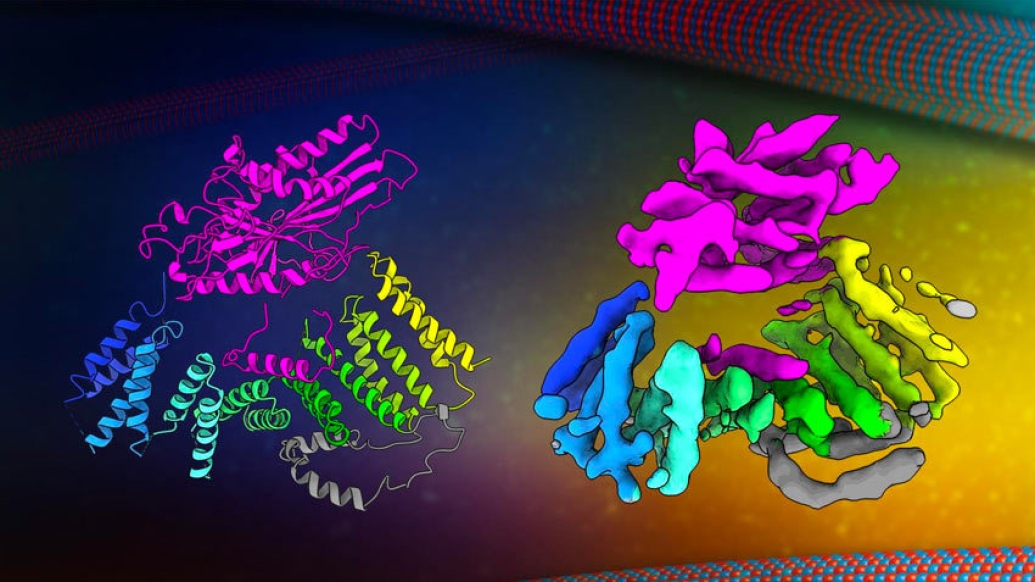The findings reveal more about the process essential for maintaining cellular health and function.
11:54 AM
Author |

As many across the United States have experienced in recent months, any disruption to the commercial supply chain can have far-reaching impacts.
The same is true for the supply chain inside our cells: complex networks of signals, proteins and other cargos need to get to the right place at the right time. And to get there, many rely on a type of protein called kinesins.
A study led by the University of Michigan has now uncovered unexpected details about a key regulator of this cellular traffic. The findings, published in the journal Science Advances, shed new light on a process that is essential for maintaining cellular health and function.
On the superhighways inside our cells, kinesins are the delivery trucks. These so-called motor proteins 'walk' along the microtubules that form intercellular pathways, carrying their freight to the appropriate destination. In a neuron that extends the full length of the leg, for example, kinesins transport key sensory signals from the periphery to the central nervous system.
"Because they are involved in virtually every cellular operation, kinesins must be carefully controlled," explained structural biologist Michael Cianfrocco, Ph.D., a faculty member at the U-M Life Sciences Institute and Medical School. "If you think about a truck that you want to load with cargo, you can't load the truck and get the cargo to its destination if the truck never stops moving."
Until fairly recently, scientists believed kinesins primarily depended on their own self-regulation to stop and go as needed. The discovery of a kinesin-binding protein called KIFBP approximately a decade ago challenged that assumption. When KIFBP malfunctions, it can lead to human conditions such as Goldberg-Schprintzen syndrome, a rare developmental disorder.
Using a technique called cryo-electron microscopy (cryo-EM), U-M researchers captured a 3D image of KIFBP coupled to a kinesin. The images clarified precisely how KIFBP stops the kinesin's progress, by binding to its 'foot' and preventing it from moving along the microtubule road.
Researchers from the University of Vermont Cancer Center then tested the findings in cells and were able to verify that that KIFPB is a natural kinesin inhibitor.
"Just like it doesn't make sense to deploy a truck unless you have a package you want to deliver, it doesn't make sense for kinesins to keep moving when they aren't transporting cargo," said Ryoma Ohi, Ph.D., an associate professor of cell and developmental biology at the U-M Medical School and a senior author of the study. "Now we can see that KIFBP acts almost like a boot on a wheel, immobilizing the kinesin motors."
The new molecular details also revealed interactions between kinesins and KIFBP that surprised the researchers.
"KIFBP doesn't just grab the foot, but it goes a step further and pulls that foot out of the motor, stretched away from the rest of the kinesin," explained Cianfrocco, who is also a senior author of the study. "Kinesins are built to pull things throughout the cell, so there is a lot of inward force on them. The idea that a critical part can just be yanked in the opposite direction was completely unexpected."
This latest research confirms and builds upon a recent study from another research team into KIFBP's mechanisms of action, providing a more precise, higher-resolution view with enough detail to better understand how KIFBP does its job.
Paper cited: "Kinesin-binding protein remodels the kinesin motor to prevent microtubule binding," Science Advances. DOI: 10.1126/sciadv.abj9812

Explore a variety of healthcare news & stories by visiting the Health Lab home page for more articles.

Department of Communication at Michigan Medicine
Want top health & research news weekly? Sign up for Health Lab’s newsletters today!





